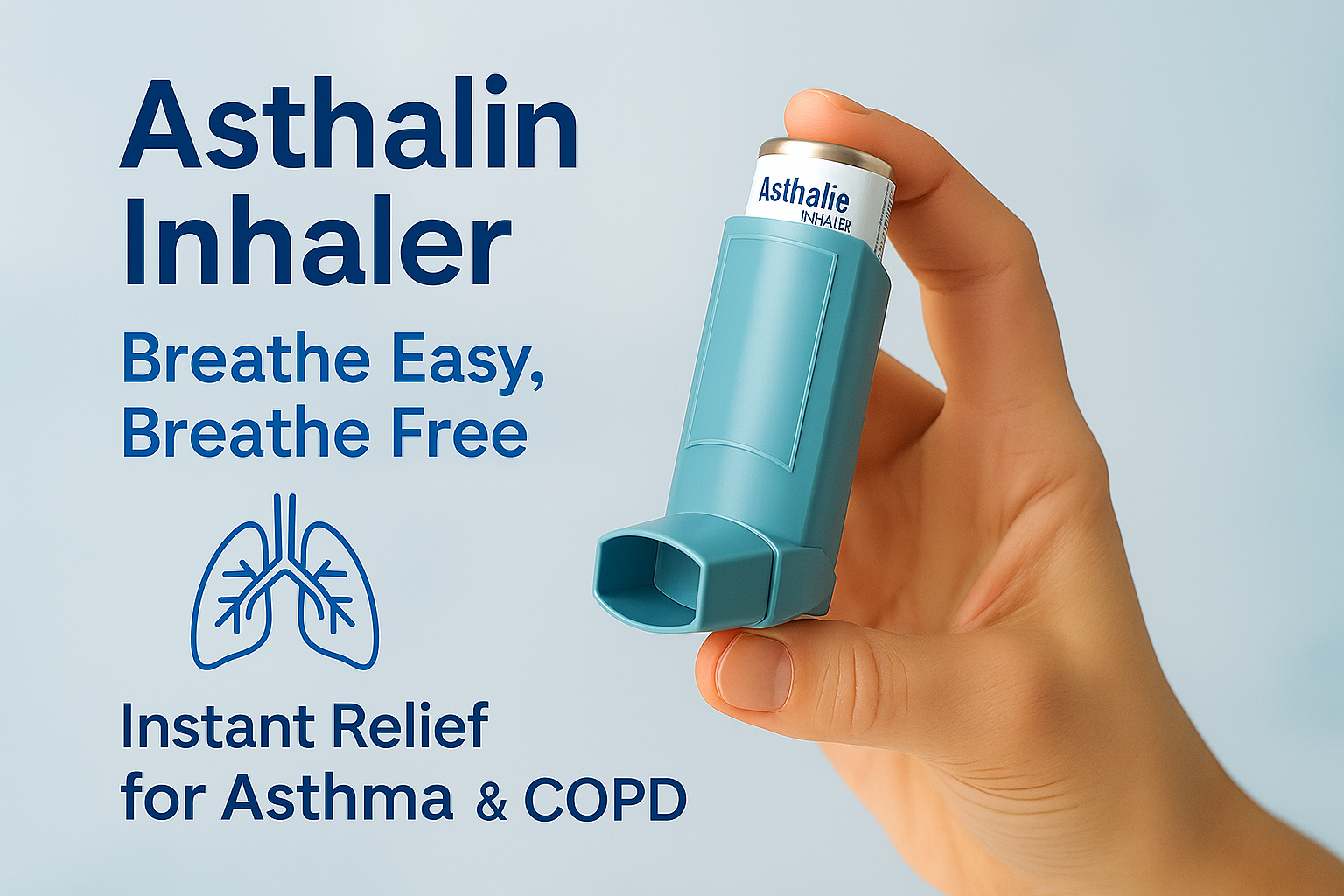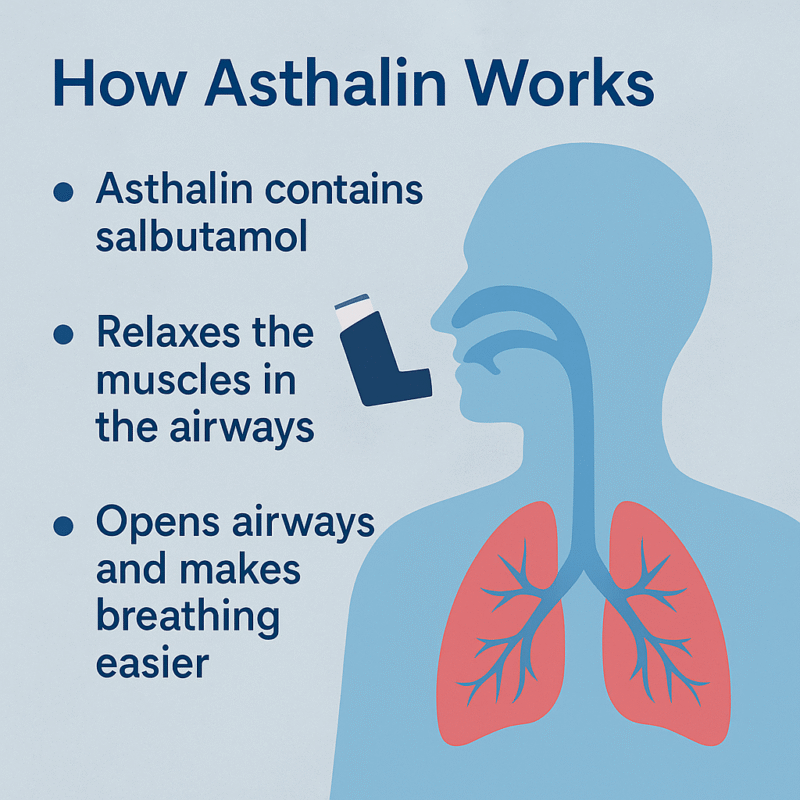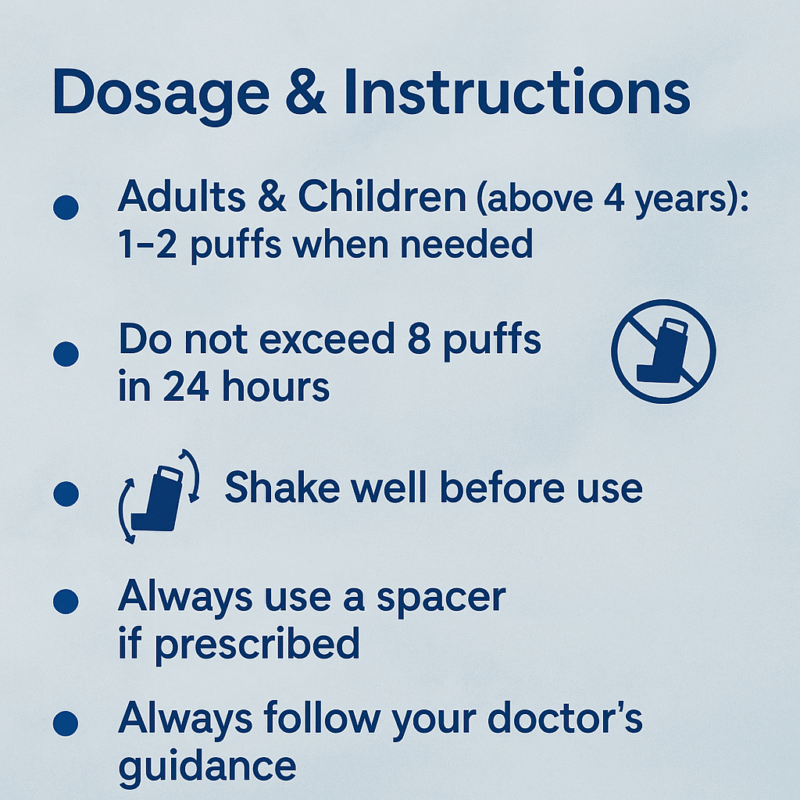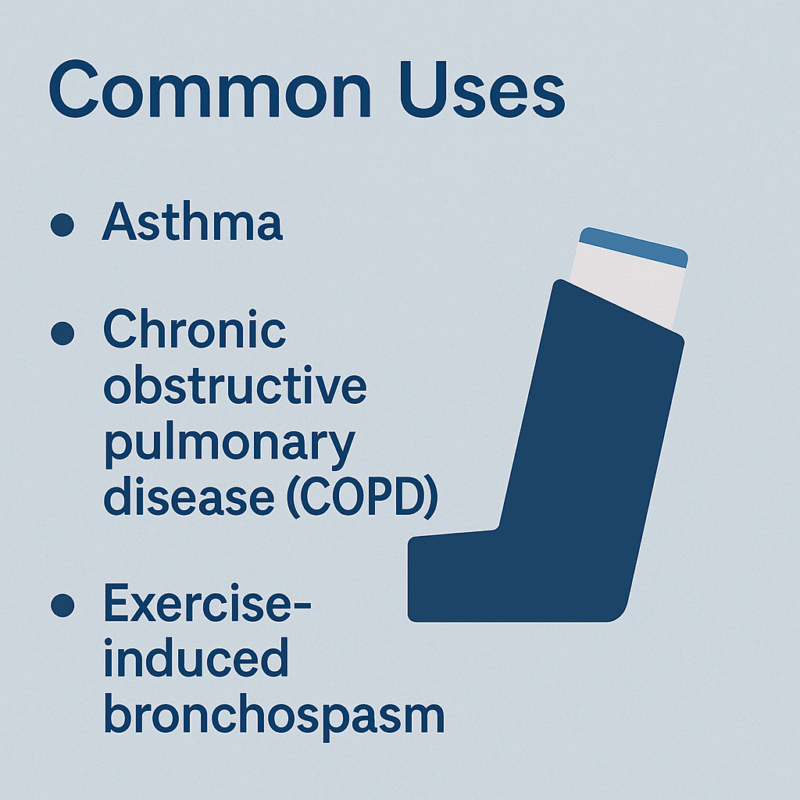Blog
Asthalin Inhaler:Quick Relief for Asthma,COPD & Breathing Disorders

Asthalin Inhaler: Fast Relief for Asthma & Breathing Problems
Asthalin Inhaler is a widely used medication for asthma, chronic obstructive pulmonary disease (COPD), and other breathing disorders. It contains Salbutamol (100 mcg per puff), a fast-acting bronchodilator that provides quick relief by relaxing the muscles in the airways and opening up the lungs.
🔹 How Asthalin Works
Salbutamol stimulates beta-2 receptors in the lungs, helping the air passages widen. This action offers rapid relief from symptoms like:
- Wheezing
- Chest tightness
- Shortness of breath
- Coughing

Dosage & Instructions
- Adults & Children (above 4 years): 1–2 puffs when needed
- Do not exceed 8 puffs in 24 hours
- Shake well before use, and always use a spacer if prescribed
- Always follow your doctor’s guidance

Common Uses
- Sudden asthma attacks (rescue inhaler)
- Prevention of exercise-induced bronchospasm
- Symptom management in COPD patients
- Allergic or environmental breathing issues

Precautions
- Inform your doctor if you have heart disease, high blood pressure, diabetes, or hyperthyroidism
- Avoid overuse—excess use may reduce effectiveness or cause side effects
Possible Side Effects
- Palpitations
- Nervousness or anxiety
- Tremors (especially hands)
- Headache
✅ Conclusion
Asthalin Inhaler is a lifesaver for those suffering from asthma and COPD. It’s essential to use it correctly and keep it handy, especially during seasonal changes, pollution, or physical activity.
